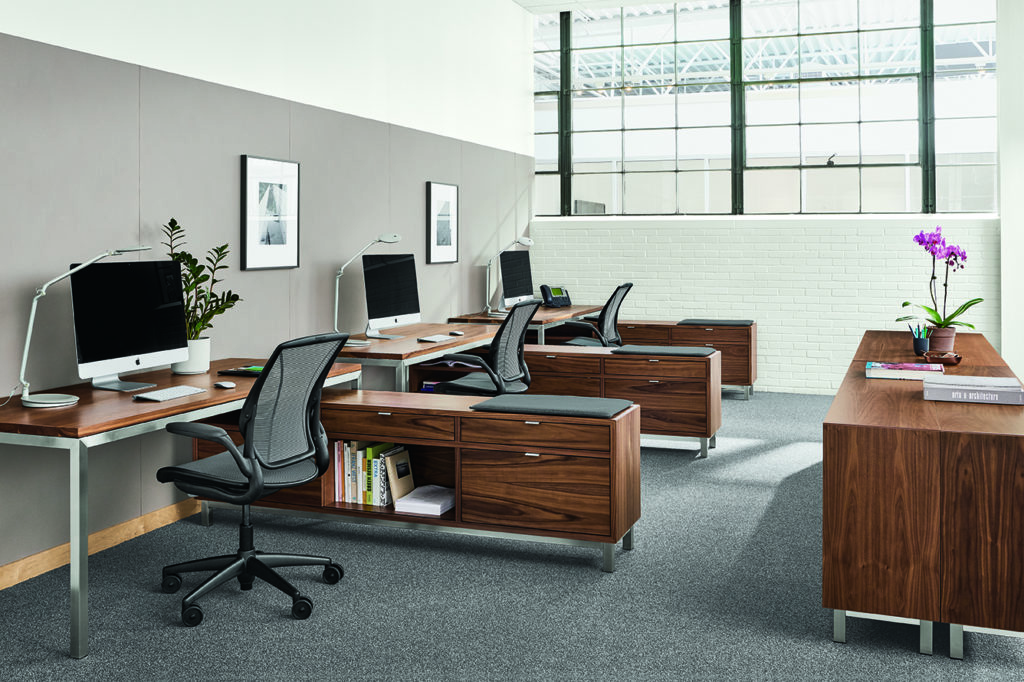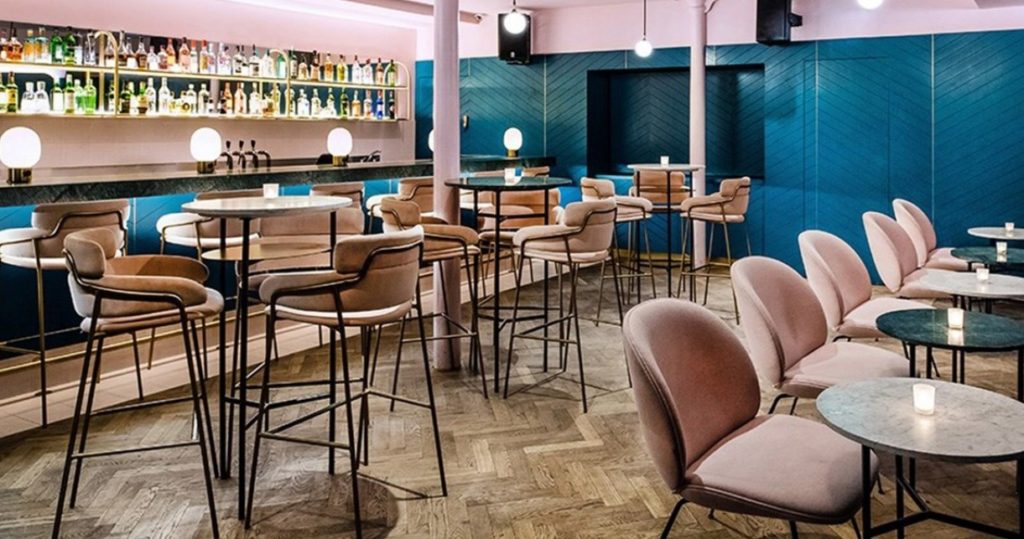While the benefits of procuring furniture on contract are manifold, there are a healthy number of obstacles & challenges that do prop up during the manufacturer enlisting & delivery process.
This is not to dissuade anyone from exploring this as a profitable activity, it’s just that one must understand the risks & weigh all aspects accordingly without solely focusing on the positives.
Unsurprisingly, it works only when the buyer, procurer or importer of furniture has a bulk requirement, this is simply because the fixed costs of manufacturing (Machinery start-up costs, labour continuity, raw material procurement) a particular design, regardless of whether it is “off-the-shelf” design or a custom design, is too high for a manufacturer to warrant only a limited production. It is a classic case of benefitting from “scale economics” for any manufacturer & the phenomenon is not unique to the furniture industry.
However, for any number of units after the “break-even point”, the manufacturer would rather prefer selling directly to the buyer than selling simply to a wholesaler & retailer. This is mainly due to the pricing power, meaning that manufacturer will get a higher profit margin & the buyer will still benefit from this, simply because there isn’t a middleman involved in the transaction.
In a nutshell, this is why contract manufacturing furniture works. Now, let’s understand the main types buyers that should explore this procurement method.
COMMERCIAL OFFICE FURNITURE

Landlords or property owners of commercial office spaces or owners of large co-working areas typically let-out their spaces after fully furnishing it to get more value out of the agreement. [We’ve covered office furniture in one of our earlier posts]
This means that the interiors, fixtures & furniture must not only be up-to-date, they should also be of a high quality & durable. Office furniture manufacturing requires a whole different set of expertise & skill sets.
Unsurprisingly, office furniture suppliers tend to exclusively deal with office furniture only, simply due to the intricacies involved.
It is easily one of the most difficult types of furniture to procure, ergonomics, wiring, panel gaps, etc are some of the aspects to keep in mind. While there’s a growing pattern of buyers going for trendy office furniture in an effort to stand out, they do have a reputation for being brittle & not suitable for the office space.
As employees will be spending at least 5 hours a day using office furniture responsibility for ensuring wellness at work falls into the hands of employers & facility owners
Indiana furniture based in Jasper is one such company that comfortably supplies office swivel chairs, conference tables, work desks, cafeteria furniture & trendy standing desks as well.
The global office furniture market is also expected to reach about USD 88 Billion by 2024, growing at a CAGR of 6.7% till 2024 as per Researchnester (Source)
Hospitality Furniture

Hospitality furniture is largely dictated by intricate designs & hospitality-grade quality. It also requires professionals and any residential furniture supplier simply will not be able to cater to hospitality-specific requirements, regardless of how similar both of them seem.
You see, hospitality furniture needs to be the toughest & tout, all that moving around, load bearing time, spillages, scratches and food particles mean that furniture used for hospitality needs to be able to weather the harshest conditions.
Even within hospitality, there are different clientele involved, each with their own unique sets of challenges. We’ve compiled the difficulties faced by hospitality interior designers & owners.
It is difficult to come up with a recommendation for a single manufacturer for hospitality, but right now, one of the leading suppliers & professionals in contract manufacturing these is Furnitureroots, that designs and makes the furniture in most hospitality styles.
Hotel, Lodges, Resorts, B&Bs & Guesthouses
These businesses require more or less the same type of furniture. Essentially, they can be bifurcated into furniture for rooms/bedrooms, lobby area & dining area.
For rooms, given the costs involved, most hotel owners, at least for 2- & 3-star hotels, prefer to opt for plywood or engineered furniture spanning cabinets, Case goods, bedside tables, dressers etc.
Lobbies typically need commercial counters, lobby chairs, elegant sofas & hotel carts.
Outdoor Furniture

Also referred to as patio furniture in the United States & other western countries. In an effort to minimize claustrophobia & allow for fresh, open-air seating arrangements, outdoor furniture is used heavily in these countries. These furniture types are mainly made using cast iron or wrought iron both of which are expensive to manufacture locally, cane rattan weave which is found mainly in south Asian countries of Indonesia & Vietnam or cane furniture which is found mostly in India.
As alternatives to this relatively inexpensive furniture. Luxurious & exquisite hotels & restaurants also choose from more opulent choices in wood & modern materials. Hardwood like teak, mango wood & oak make for great outdoor furniture that are weather proof and stand the test of time rather well.
Materials of the 20th & 21st century like stainless steel & cast aluminium are great ideal for outdoor use as well.
We’ve also previously covered some outdoor lounge-style furniture designs that you can check out here.
Restaurants, Cafes, Bistros, Pubs, Breweries & Wineries
These are probably the most difficult to cater to. Opening up restaurants & cafes are mostly someone’s long-time dream. Except in a few cases. This also means that the owners tend to have a rough idea of what the restaurants interiors, lighting & stylistic elements should look like.
But they also must try and find a delicate balance with what is in popular demand and then build on it. This is also why most themed cafes & restaurants only have minor cues in that can be traced back to the planned design theme.
Popular design styles that restaurants opt for nowadays in trend are French provincial styles, vintage-rustic, glamour-industrial & modern-Scandinavian styles.
Furniture Store Owners, Retailers, Wholesalers, Importers & Buying Agents

Store owners & regular importers probably don’t need how to guide at all. Most seasoned importers are well aware of the technical aspects involved not just with the furniture itself but also with various other aspects like MOQs, trade laws, quality control, schemes employed by suppliers OR someone disguised as a supplier & so on.
However, it is important to know which countries & more importantly, which supplier offers the best designs with in that country. It is also important to not rely on official documentation especially when the certification comes from a dubious agency (for instance, it is not uncommon for state run quality control agencies in China to issue high quality certification to leather which is of a much lower grade)
As a seller, identifying your markets for selling goes hand in hand with identifying buying markets & it can have a make-or-break effect on your business model.
For instance, Indian-style furniture are in hot demand in Russia. However, unfamiliarity with the place & language barriers has restricted supply to the Russian furniture market. Several British companies & businesses have found great success by simply sourcing from India & selling in Russia as most Indian suppliers can communicate in English rather well.
How To Go About Contract Manufacturing?
If the objective is to do it at the lowest cost possible, you will have to move it off-shore. It’s a simple fact. Labour cost in western countries simply cannot match prices in countries like India, China or Vietnam.
If you do decide to go ahead with a local manufacturer, make sure that you don’t skimp on pricing. The manufacturer will cut down on qualitative aspects simply to match you on the prices.
In fact, this is a universal truth that is the case across manufacturers, regardless of their home country.
Secondly, make sure to get your hands dirty. Get quotes from multiple suppliers. Negotiating on prices may not be a innate concept in western culture but in other countries, negotiating works & is also considered a given.
It is not uncommon for a manufacturer in China, Indonesia, India or Vietnam to anchor the prices slightly higher simply because of an expectation of tough negotiations.
Platforms like TaoBao, IndiaMart etc have separate teams that negotiate prices through live chat or a phone call within their platform itself.

Which Countries Should I Consider?
Unfortunately, there is no blanket answer to this question.
Just like most other products, this depends largely on the type of furniture you’re looking for, how long you wish for it to last, prices & also the risks. But we’ll stab an attempt at being as objective as possible.
You see its worth investing time into the policies and the reputation of a country as much as it is investigating the same for a manufacturer.
Why?
Because the policies coming from the state & any macroeconomic trend directly impacts the manufacturers’ ability to compete with its counterpart in another country.
CHINA
China is by far, the largest exporter of furniture and while the companies it hosts may suit your needs. Data compiled by Statista indicates that China’s furniture export in 2019 was close to 64 Billion Dollars.
But sourcing from China may not necessarily be your best bet. It is a popular misconception that labour costs in China is at a rock bottom. It simply is not. The growth that China has witnessed is massive & has raised the labour rates as well.
So how does it manage with the aggressive pricing?
Scale & technology. This is also why, only a select few items are best sourced from China. Furniture that requires a great deal of craftsmanship, talent & skill are best not sourced from China.
Also, be weary of the quality standards being portrayed. Most large manufacturers claim to have run independent tests by government-affiliated control centres but this is simply not the case.
GERMANY
A great option if price is not a barrier. Several suppliers in Germany are extremely good at quality control, build quality & the even the small manufacturers are adept at batch manufacturing. Which means that relatively small quantities can also be made with ease.
Great option if your order size is small & longevity of furniture is something you’re actively looking for.
Wilkhahn has a reputation for being quintessentially German with an unparalleled build quality. They mainly do office furniture as well.
INDIA
While India may not be on the map when compared to other exporters of furniture, they are well known for some rare, unique & very desirable furniture styles that are home to India itself. Furniture that requires a great deal of attention, steady hands, complex patterns & ornate carvings are best sourced from India.
Reclaimed wood furniture, industrial style furniture, bone inlay furniture & some styles of contemporary furniture that requires manual work & a “human touch” are best sourced from India.
Another advantage is that most suppliers in India speak English quite fluently & are very well versed with western cultures. Don’t be afraid to negotiate on prices though.
The drawback is that your order is likely to get delayed, shipping will not exactly be hassle free due to archaic trade laws & you’ll have to keep a steady lookout for scammers disguised as buying agencies.
Other popular options are Vietnam that is well known for its woodworking industry, Indonesia that is well known its cane/rattan weave furniture & Italy that’s well known for full grain & top grain leather furniture.
The tips & recommendations given above are merely indicative and should by no means be treated as gospel. Your best bet is to get exploring right away and find out for yourself.






